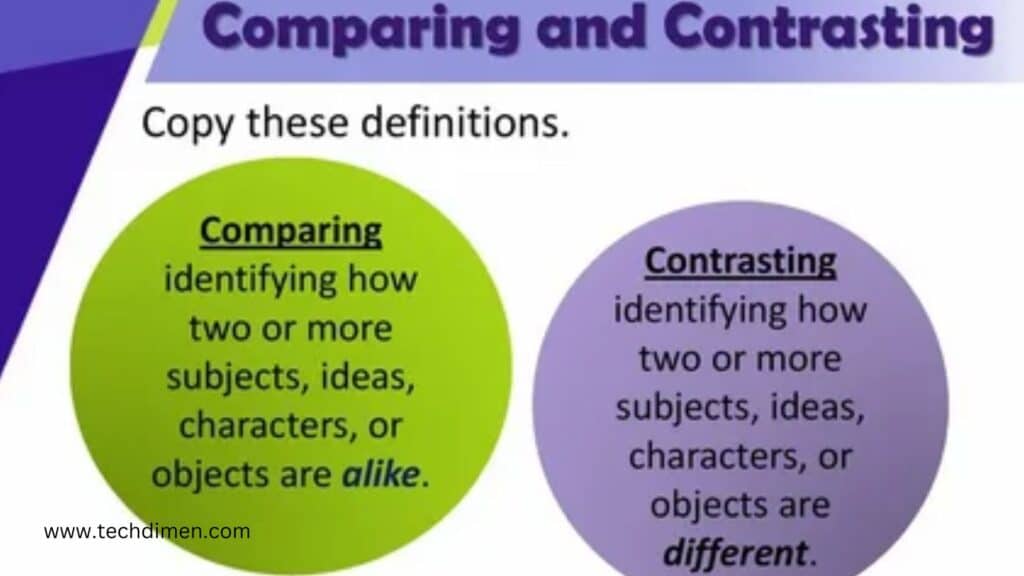In today’s fast paced digital world, businesses are shifting how they access and use technology. Instead of buying hardware or software outright, they’re embracing Technology as a Service (TaaS) a flexible, subscription-based model that delivers technology solutions exactly when needed. This change is reshaping IT, cutting costs, and speeding innovation.This article dives deep into what TaaS is, why it’s gaining momentum, the different forms it takes, the challenges it presents, and how to choose the right provider. We’ll also explore how industries are using TaaS and the exciting trends shaping its future.
What Is Technology as a Service
Technology as a Service lets businesses rent technology rather than owning it. Whether it’s software, hardware, platforms, or infrastructure, companies pay for what they use kind of like streaming movies instead of buying DVDs.
TaaS combines models like Software as a Service (SaaS), Hardware as a Service (HaaS), Platform as a Service (PaaS), and Infrastructure as a Service into one flexible framework. This approach replaces large upfront investments with predictable, ongoing payments and shifts management and maintenance responsibilities to service providers.
Comparing Traditional IT and TaaS

| Feature | Traditional IT Ownership | Technology as a Service (TaaS) |
|---|---|---|
| Initial Cost | High capital expenditure | Low upfront, pay-as-you-go model |
| Maintenance | Managed internally or outsourced | Included in service agreement |
| Scalability | Limited by purchased capacity | Dynamic and on-demand |
| Deployment Time | Weeks to months | Days or hours |
| Support | In-house or contracted IT teams | 24/7 vendor-managed support |
Why Are Businesses Adopting Technology as a Service
Businesses move to TaaS because it delivers financial, operational, and strategic benefits that traditional IT just can’t match.
Cost Efficiency and Predictability
By switching from large capital expenses to operational expenses, companies smooth out budgets. For example, a mid-sized firm adopting TaaS reported cutting IT hardware costs by 35% within two years, freeing up cash flow for other priorities.
Speed and Agility
TaaS enables rapid scaling. A retail chain used TaaS to deploy new point-of-sale systems in weeks instead of months, enabling quick expansions into new markets.
Reduced Maintenance Burden
Providers handle updates, patches, and security monitoring. This frees IT teams from routine chores so they can focus on innovation and strategic projects.
Support for Remote and Hybrid Work
As more employees work remotely, TaaS ensures consistent, secure access to up-to-date technology no matter where they are.
Types of Technology Delivered as a Service

TaaS isn’t just one service it covers a spectrum of offerings tailored to different needs:
Hardware as a Service (HaaS)
Rent physical devices like laptops, servers, or networking gear. HaaS providers handle delivery, maintenance, and upgrades, eliminating hardware refresh headaches.
Software as a Service (SaaS)
Subscribe to cloud-based software like Google Workspace or Salesforce. SaaS ensures apps are always current, accessible anywhere, and easy to scale.
Platform as a Service (PaaS)
Developers use PaaS to build and deploy applications without managing servers or storage. Platforms like Heroku and Microsoft Azure simplify app creation.
Infrastructure as a Service (IaaS)
Get on demand virtualized computing resources such as servers and storage. AWS and Google Cloud are major players here.
Emerging Models
| TaaS Model | What It Includes | Key Advantage |
|---|---|---|
| Hardware as a Service (HaaS) | Physical devices on subscription | No upfront hardware investment |
| Software as a Service (SaaS) | Cloud-hosted applications | Continuous updates and remote access |
| Platform as a Service (PaaS) | Cloud app development platforms | Faster, simpler application delivery |
| Infrastructure as a Service (IaaS) | Virtual servers and storage | Scalable computing infrastructure |
| AI as a Service | Prebuilt AI tools and APIs | Easy AI integration |
| Cybersecurity as a Service | Managed security monitoring | Enhanced threat protection |
| Blockchain as a Service | Cloud-based blockchain networks | Simplified blockchain management |
The Top Benefits of Technology as a Service
Predictable, Flexible Costs
TaaS replaces surprise expenses with fixed or usage-based fees. This predictability makes budgeting easier and reduces capital constraints.
Rapid Implementation
Technology that once took months to deploy now becomes operational in days or even hours. This speed allows businesses to seize opportunities faster.
Scalability Without Waste
TaaS scales up and down as needed, so companies only pay for the technology they use. This eliminates wasted capacity and enables rapid growth or contraction.
Managed Maintenance and Support
Providers handle all software updates, hardware fixes, and security patches. Your team can stop firefighting and focus on higher-value activities.
Stronger Security Posture
Continuous monitoring and advanced cybersecurity tools keep threats at bay, often improving security beyond what many companies can manage internally.
The Challenges and Risks of TaaS You Should Know
Despite its appeal, TaaS isn’t without pitfalls.
Vendor Lock-In
Committing to a single provider can make switching difficult and costly. Businesses should carefully negotiate exit clauses to avoid being stuck.
Data Sovereignty and Compliance
Storing sensitive data off-premises can clash with regulations like HIPAA or GDPR. Choosing providers with local data centers and compliance certifications is critical.
Hidden or Unexpected Costs
Be wary of fees for exceeding usage limits, premium support, or early contract termination.
Service Downtime
Outages from providers can disrupt business operations. Strong Service Level Agreements (SLAs) with clear uptime guarantees and penalties are essential.
| Potential Risk | Why It Matters | How to Manage |
|---|---|---|
| Vendor Lock-In | Limits flexibility and negotiating power | Use multi-vendor strategies and clear exit terms |
| Data Compliance | Violations can cause legal trouble | Choose compliant providers, verify certifications |
| Unexpected Fees | Can increase overall costs | Review contract details carefully |
| Service Interruptions | Business continuity risk | Demand robust SLAs and backup plans |
How to Pick the Right Technology as a Service Provider
Choosing a provider can make or break your TaaS experience.
Start by examining their Service Level Agreements (SLAs). These must promise high uptime, fast response times, and clear support processes.
Assess their security posture. Look for ISO 27001 certification or compliance with relevant regulations like HIPAA or GDPR.
Check if their offerings scale with your business needs. A good provider lets you easily add or drop services without penalties.
Evaluate how well their solutions integrate with your current IT environment. Smooth integration prevents costly migration headaches.
Seek out references and customer success stories. Real-world experience shows whether the provider delivers on promises.
An ideal vendor offers transparent pricing, flexible contracts, thorough data ownership policies, and a proven track record in your industry.
How Industries Are Harnessing Technology as a Service

TaaS is revolutionizing many sectors by tailoring solutions to their unique demands.
Healthcare
Hospitals use EHR as a Service to ensure secure, compliant electronic records without massive infrastructure investments. Medical device subscriptions keep tech current and reduce costs.
Financial Services
Banks and insurers adopt TaaS for fraud detection, risk management, and compliance automation, allowing quick adaptation to regulatory changes.
Education
Schools and universities deploy cloud-based learning platforms and device subscriptions to support remote and hybrid teaching models.
Retail
Retailers leverage POS as a Service and cloud inventory management to roll out new stores quickly and keep tech fresh without heavy IT overhead.
Manufacturing
Factories use IoT platforms and predictive maintenance services to reduce downtime and boost efficiency.
| Industry | TaaS Application | Business Impact |
|---|---|---|
| Healthcare | EHR and device subscriptions | Compliance and cost efficiency |
| Finance | Fraud detection and compliance tools | Risk reduction and agility |
| Education | Cloud LMS and devices | Flexibility for remote learning |
| Retail | POS and inventory as a Service | Faster expansion and cost control |
| Manufacturing | IoT and predictive maintenance | Increased uptime and lower operational costs |
What’s Next for Technology as a Service
The future promises even more innovation in TaaS.
AI powered automation will streamline IT operations, boosting efficiency and reducing human error.
Edge computing integration will push processing closer to data sources, enhancing performance for IoT and real-time analytics.
Industry-specific TaaS offerings will rise, tackling specialized needs in sectors like healthcare, finance, and manufacturing.
Sustainability and green IT will grow in importance, with providers offering energy efficient solutions to meet environmental goals.
Is TaaS the Right Move for Your Business
TaaS offers huge potential: lower costs, faster innovation, and scalable, managed technology. It’s perfect for companies wanting agility and predictable expenses.But weigh the risks, like vendor lock-in and compliance challenges, especially if you operate in regulated industries.
If you need rapid tech deployment and want to offload IT maintenance, TaaS is a game-changer. For others, a hybrid approach blending owned and service-based technology might make sense.
FAQS:Technology as a Service
What is Technology as a Service (TaaS)?
Technology as a Service, commonly called TaaS, is a cloud based delivery model where users access technology resources such as software, hardware, and IT infrastructure through a subscription or pay-as-you-go system. Instead of owning the technology outright, users receive it as a service over the internet.
How does Technology as a Service work?
In a TaaS model, the provider hosts and manages the technology resources on their servers. Users then remotely access these resources via the internet and pay based on their usage. This approach eliminates the need for investing heavily in physical infrastructure or software licenses.
What are the benefits of Technology as a Service?
Using TaaS helps businesses reduce their upfront costs significantly because there is no need to buy expensive equipment or software licenses. It offers scalability and flexibility, allowing users to increase or decrease resources as needed. Additionally, users gain access to the latest technologies without worrying about updates or maintenance, which are handled by the provider. This also means the internal IT team can focus on more strategic projects rather than routine maintenance, and companies can deploy solutions faster to improve overall efficiency.
What types of services fall under Technology as a Service?
TaaS encompasses a wide range of services. These include Software as a Service (SaaS), where software applications are delivered over the internet; Infrastructure as a Service (IaaS), which provides virtualized computing resources; Platform as a Service (PaaS), offering platforms for application development; Hardware as a Service (HaaS), where physical equipment is leased; and Security as a Service (SECaaS), which delivers security solutions remotely.
Who can benefit from Technology as a Service?
Organizations of all sizes, from small startups to large enterprises, can benefit from TaaS. It enables businesses to access advanced technology resources without heavy capital expenditure or complex IT management, making it especially useful for companies looking to be agile and cost-efficient.
Is Technology as a Service secure?
Security in TaaS depends largely on the provider’s infrastructure and policies. Many providers invest heavily in advanced security measures, compliance certifications, and data protection protocols to ensure user information remains safe and secure.
How does Technology as a Service impact IT management?
By outsourcing the management of infrastructure and software to the TaaS provider, internal IT teams face a lighter workload. This shift allows IT personnel to concentrate on innovation and strategic business needs rather than routine maintenance and troubleshooting.
Can Technology as a Service be customized?
Yes, many TaaS providers offer customizable solutions tailored to the specific needs of a business. This can include integration with existing systems, configurable features, and the ability to scale resources up or down based on demand.
What are the potential drawbacks of Technology as a Service?
One of the challenges of TaaS is the reliance on stable internet connectivity. If the connection is slow or interrupted, access to technology services can be affected. There may also be concerns about data privacy and security depending on the provider. Additionally, some businesses worry about vendor lock-in, where switching providers or solutions can be difficult. Lastly, companies may have less direct control over their technology infrastructure compared to owning it outright.
How do I choose the right Technology as a Service provider?
When selecting a TaaS provider, it is important to consider factors such as the provider’s reliability, security practices, overall cost, scalability options, and the quality of customer support. Checking whether the provider complies with relevant industry standards and has a good reputation can also help ensure you make the best choice.
Final Thought:Technology as a Service
Technology as a Service (TaaS) represents a transformative approach to delivering technology solutions, enabling businesses to access advanced tools, infrastructure, and expertise on-demand without heavy upfront investment. By shifting from ownership to a service-based model, organizations gain flexibility, scalability, and cost efficiency, empowering them to innovate faster and focus on their core missions. As digital transformation accelerates, TaaS is poised to become a foundational strategy for sustainable growth and competitive advantage.

Jhon AJS is a tech enthusiast and author at Tech Dimen, where he explores the latest trends in technology and TV dimensions. With a passion for simplifying complex topics, Jhon aims to make tech accessible and engaging for readers of all levels.







